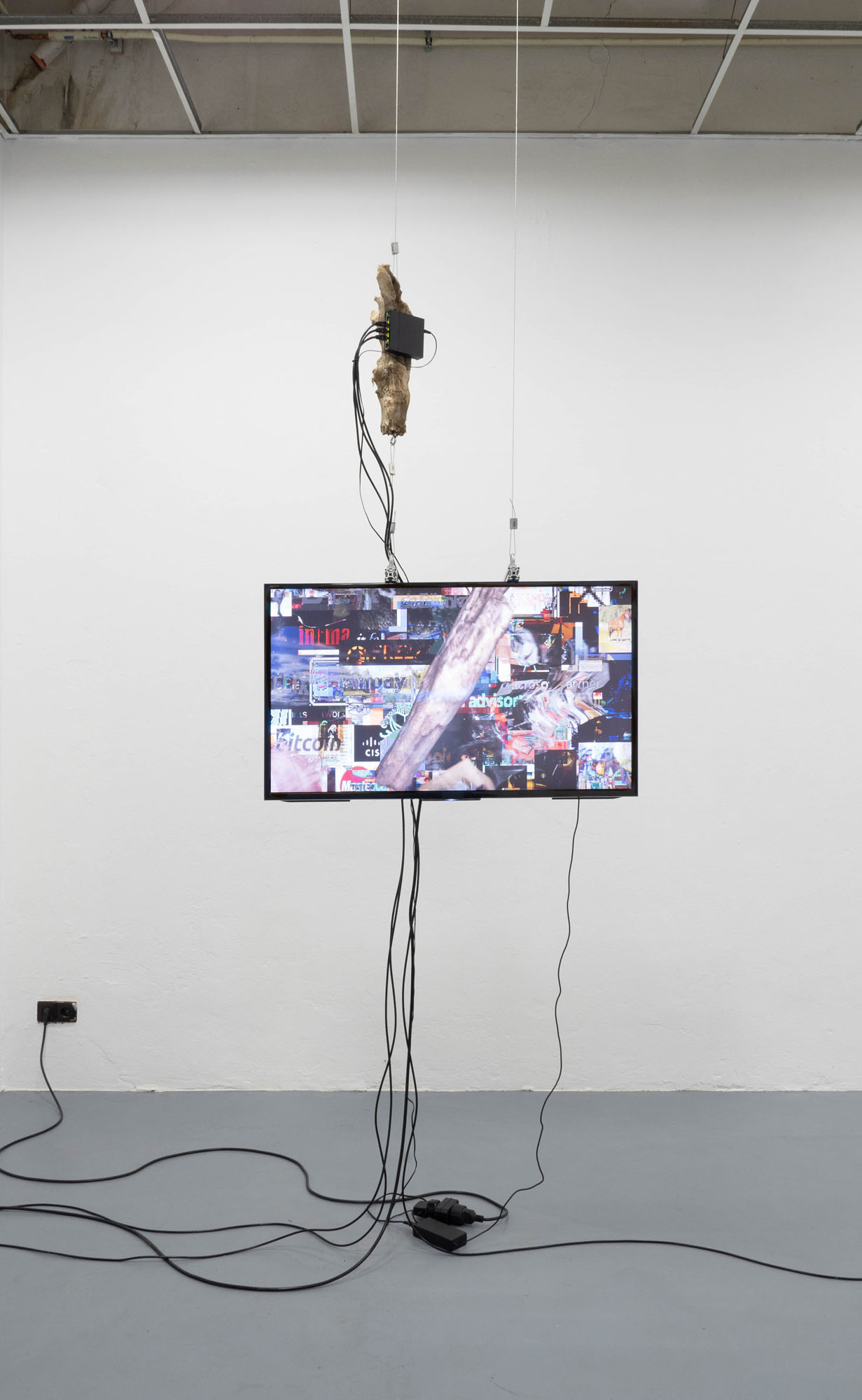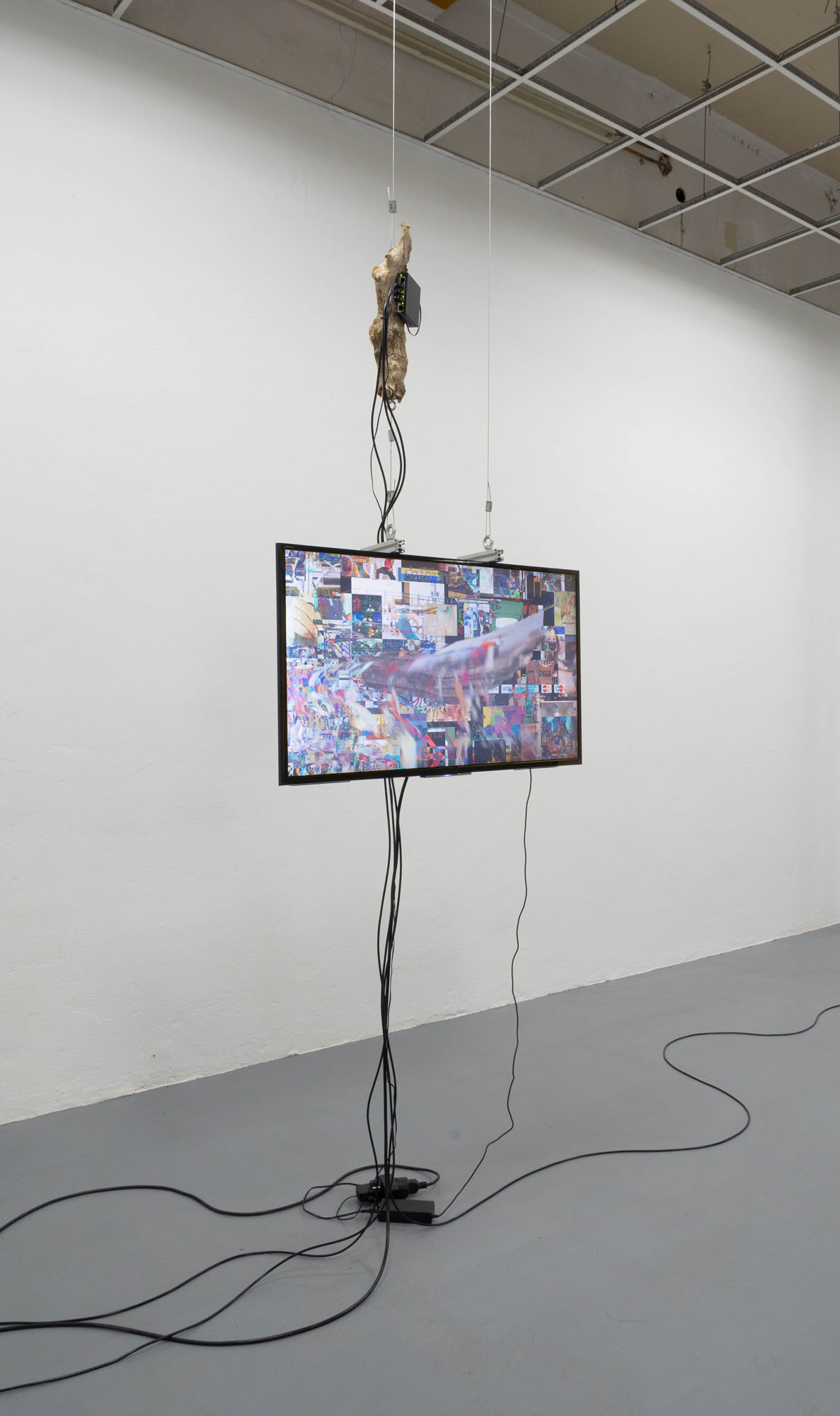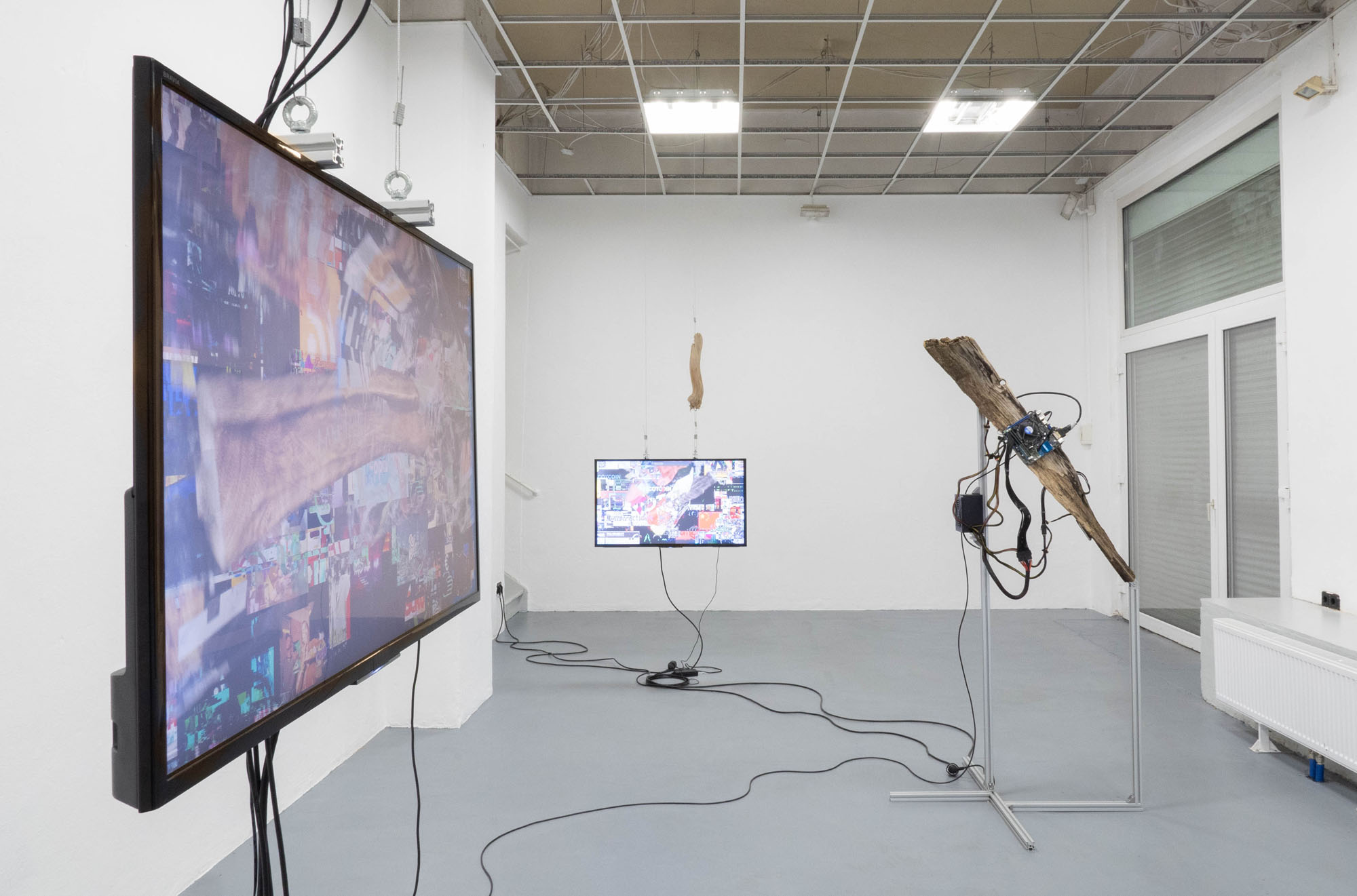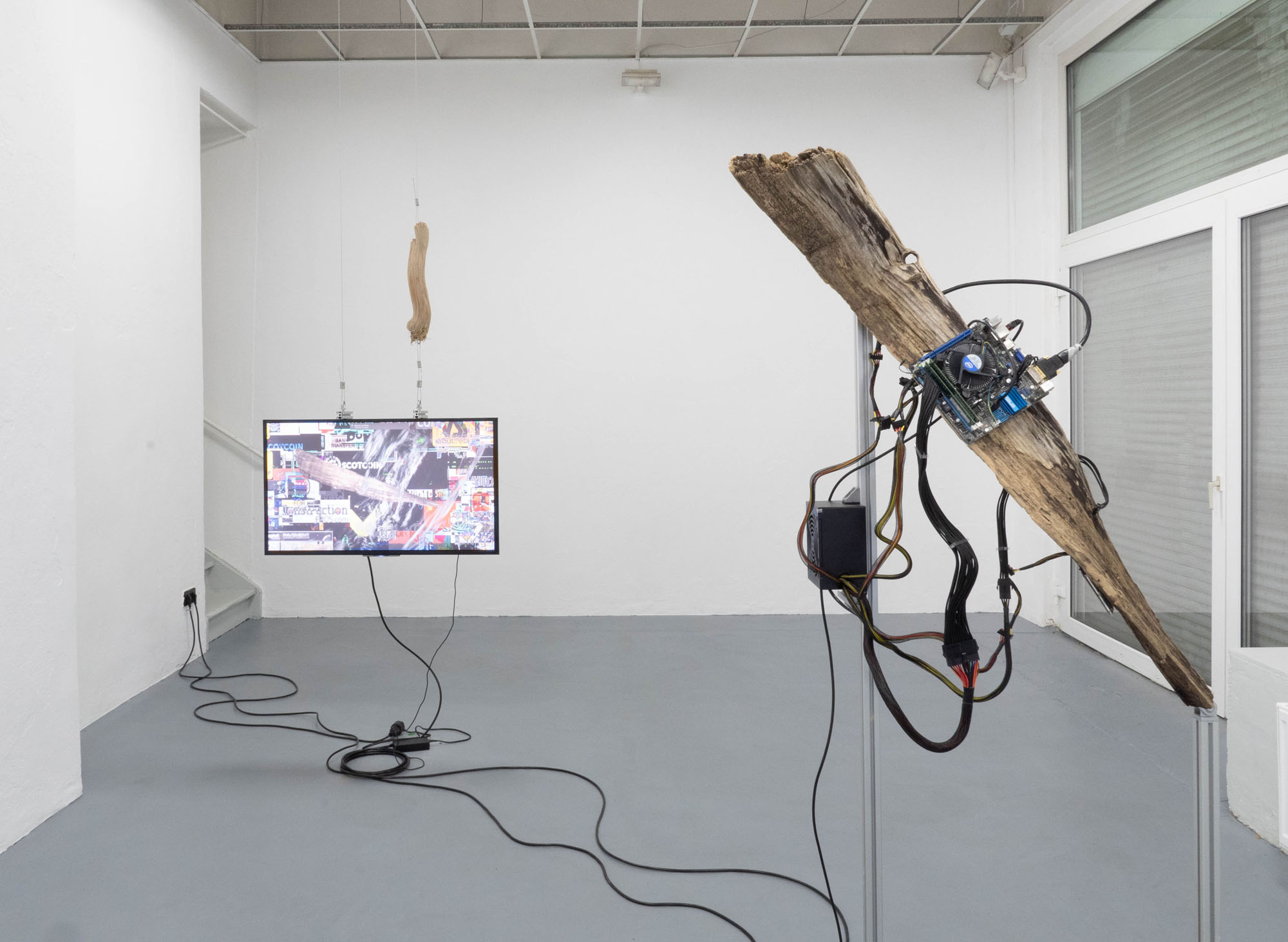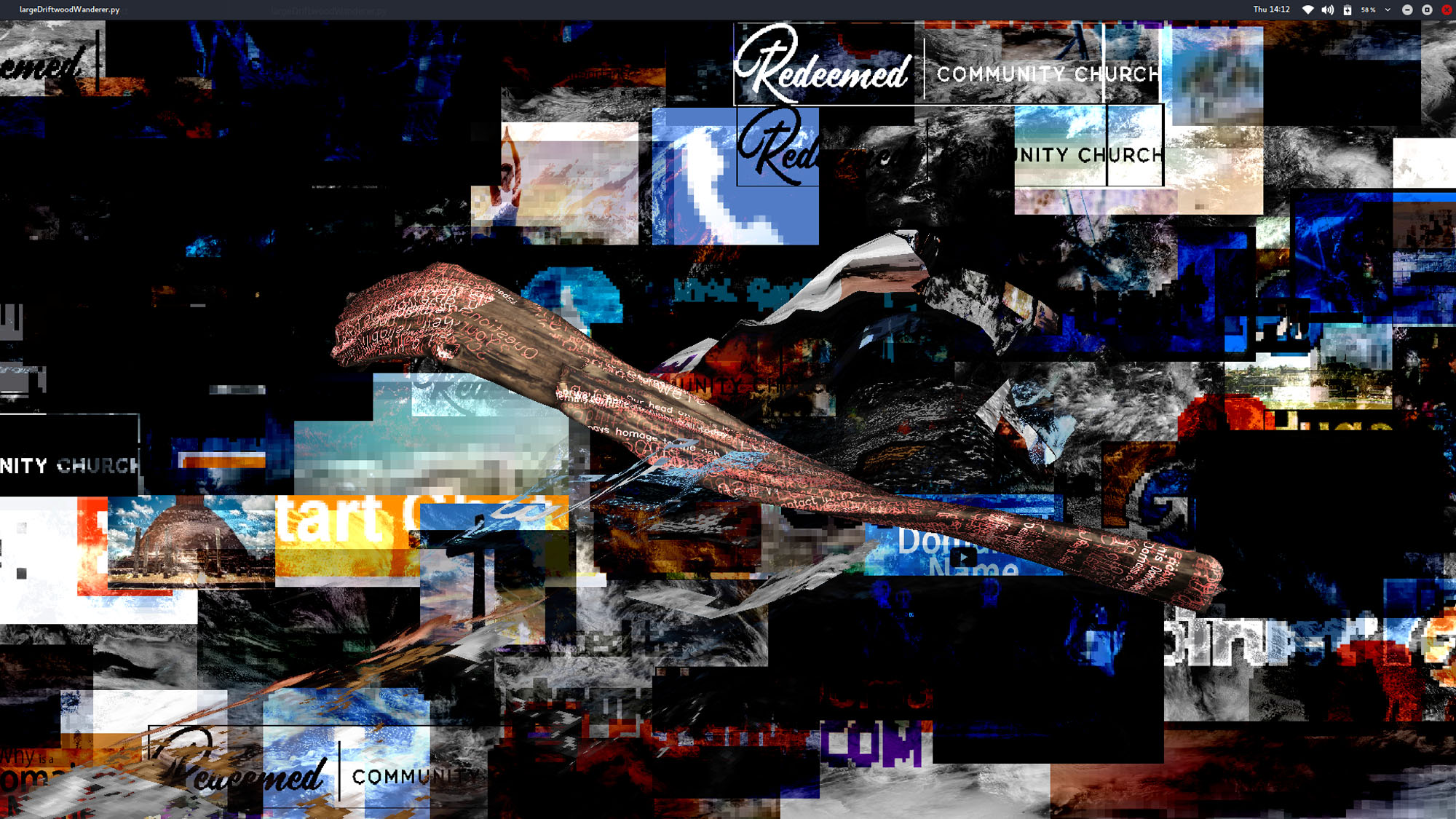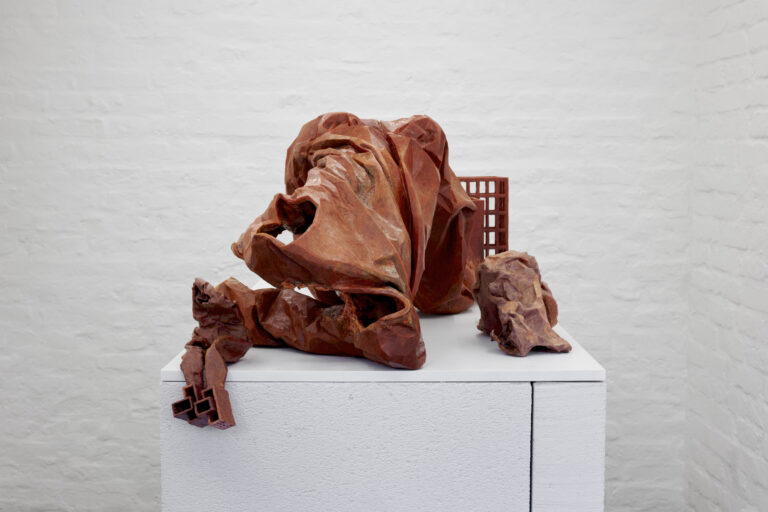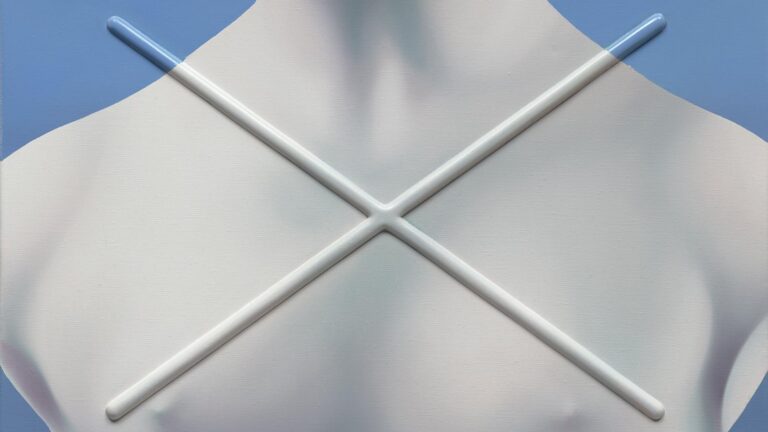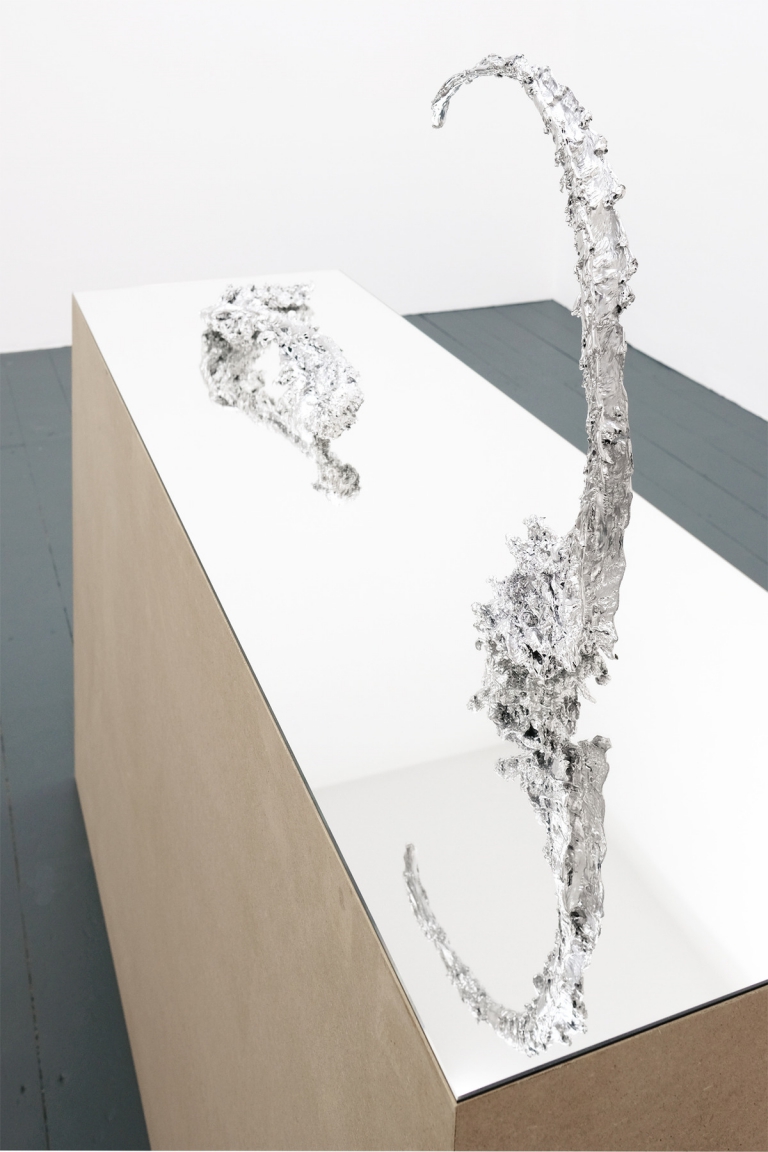Artist: Christopher MacInnes
Exhibition title: Long Range Correlation
Venue: Schimmel Projects, Dresden, Germany
Date: July 11 – 28, 2019
Photography: all images copyright and courtesy of the artist and Schimmel Projects
We seem to be in an era of threshold-breaking. Politically, ecologically, economically, Earth System is in overdrive.
By its nature Earth System, initially a constellation of organisms, environment and ecological phenomena, is a dissipative one: long range correlations chaining together to produce complex organic forms and intricate processes. Dynamic but in a symbiosis of sorts, far from equilibrium.
Into this tight web of protein strings, sheep paths and sea currents is woven our own synthetic Earth System of a different kind. Designed as a carrier: empty, dumb and mostly inert. Any innovation is with the aim of further optimisation and the reduction of point to point latency. Constructed purely with utility in mind. However in the early 2000s the infrastructure began to mutate and it became clear that it was by no means immune to the influence of the natural world.
Bad actors, hackers, haywire bots, temperature fluctuations and warming seas produce an erratic interplay between global infrastructure and natural systems. Increasingly the physical and informational network was being asked to carry more than just goods and data. It has now become the carrier for emotional, metabolic, political and ecological agendas.
What was intended to be the ultimate ordering of a connected world has proved to be subject to a much deeper form of causality. Within this network of global scale and ever decreasing latency connecting so many human, non-human and inorganic actors has created a chaos seedbed. Cause and effect become dispersed on a planetary scale creating a mycellenic tangle impossible to unpick, from which bizarre phenomena and hybrid beings are spawned.
Long Range Correlations is comprised of such hybrid beings. Fragments of driftwood, purchased through eBay, chatter silently, pinging the infrastructure. Part object, part environment, part data constellation, they have drifted on ocean currents, global shipping routes and network pathways. Both inert and active they exist in multiple realms. Their interior is woven with meandering pathways carved by palearctic long-horn beetles whose eggs in turn have been injected with the larvae of Ichneumonidae wasps. Burrowing to the surface they interrupt the appearance of a static form. Hosts to hardware, software and wetware they embody the multilayered relations of our new biosynthetic Earth System across diffuse constellations of phenomena.
Much in the same way that we often forget the landscape is more than an inert surface for us to walk upon, we often assume that networks (artificial or otherwise) are just pipelines between points. But we should have learned from the world around us that they are always more than that: We have been pursuing a dream of mute systems fulfilling our needs, what this really translates to is the dream of a dead world. Both our natural and artificial systems have reached a point of crisis, what this suggests is that we may have been dreaming the wrong dream.
Christopher MacInnes is an artist based in London. He works with computing, sculpture and organisms of many kinds. Recent exhibitions include Whale Fall (Gossamer Fog, London, 2019), Sticky Vectors (Tendency Towards, Aberdeen, 2018), Second Nature (Glasgow International, Glasgow, 2018), Spores of Love (David Dale Gallery, Glasgow, 2017) and 4K made me sick (ArebyteLASER, London, 2017).






